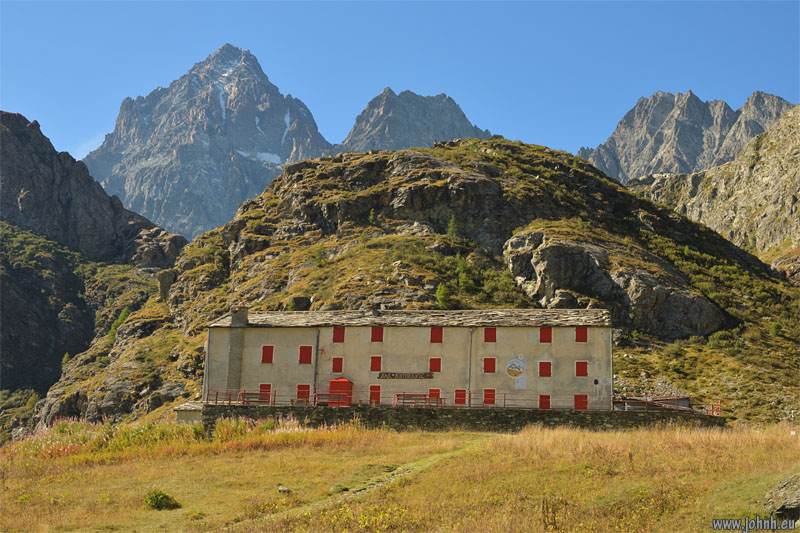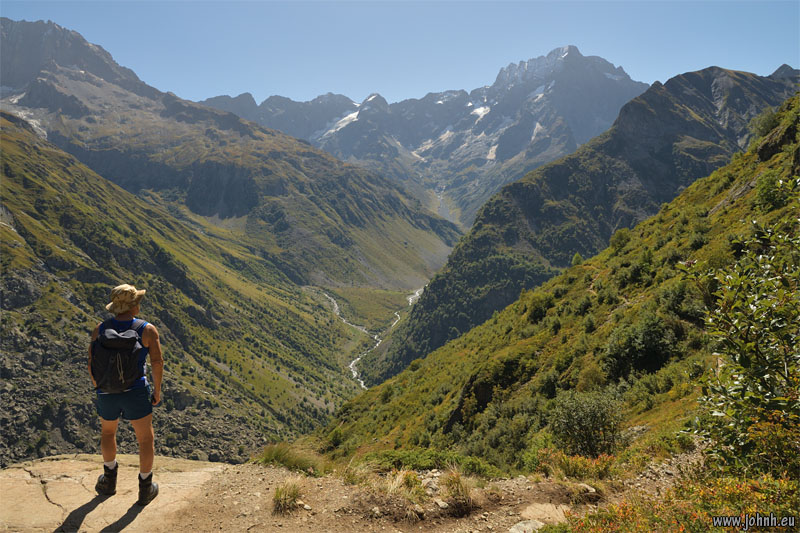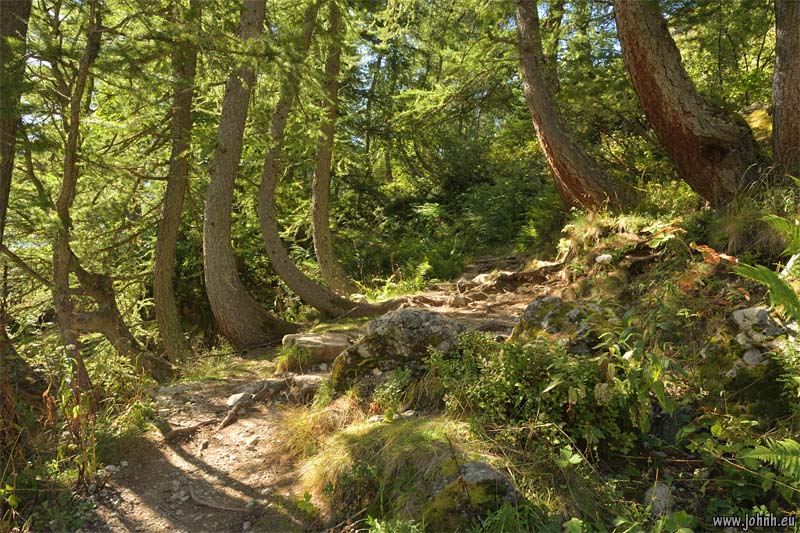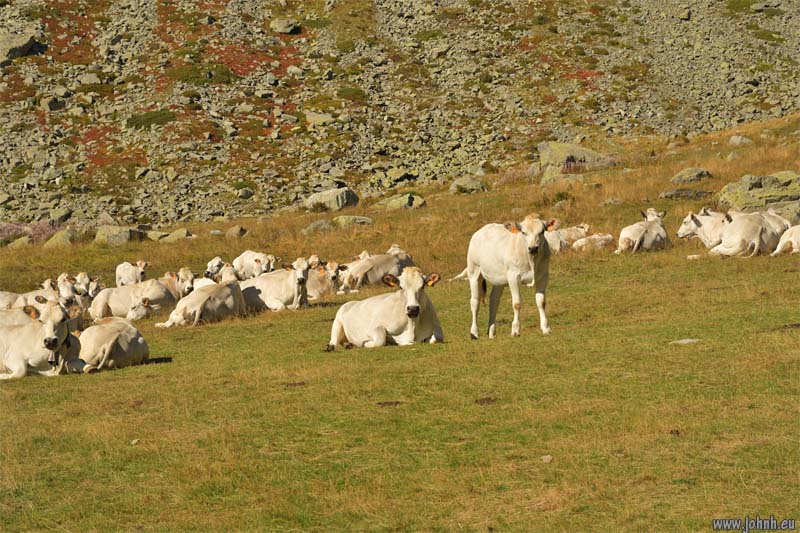Hiking

Scafell (964 m.), Lake District National Park

Snaefell (621 m.), Isle of Man
Snow on Scafell (964 m.) and Snaefell (621 m.) seen from our hike to Hooker Crag (231 m.) on Muncaster Fell, Eskdale in West Cumbria. I wore an orange jacket and JCB wellies expecting to hike through snow but we weren’t high enough for that; the wellies were anyhow good fun stomping iced puddles.
Wonderful woodland walk up the gorge of the River Arve, route known as Le Paradis des Praz. Calm and mysterious, away from the bustle of Chamonix and unaware of the Alpine granite giants in the clouds above. Fragrant and cool, always walking with the roar of the torrent alongside. We walked up the footpath from Chamonix-Mont Blanc (1038 m.) to Argentière (1250 m.) and returned on a narrow gauge (1.000 m.) train of the Mont-Blanc Express railway.
Fantastic hike surrounded by granite peaks over 3000 m. Great views in ideal weather, enough melt water to power the waterfalls but still ice and snow higher up to top off the views. And autumn berries on the bushes.
More photos: Lac de Lauzon (2018 m.), Cirque glacière de Gioberney - Parc national des Écrins

Albergo Plan del Rei (2020 m.), Mont Viso (3841 m.) and Le Pain de Sucre (3208 m.)
Hiking in the high valley of the River Po, around and above the sources of Italy's great river. Setting out from the Albergo Plan del Rei (2020 m.), our route was dominated by Mont Viso (3841 m.) and Le Pain de Sucre (3208 m.), stirring memories of previous hikes from the French side when I reached the summit of Le Pain de Sucre on a birthday.
More photos: Lago Fiorenza (2133 m.) - Parco nazionale del Monviso

La Meije (3984 m.), seen from Gare de Peyrod d’Amont (2414 m.)

La Grave (1400 m.), seen from Gare de Peyrod d’Amont (2414 m.)
Stepping out from the cable car at 2414 m., the air is cool from the breeze down from the glaciers of La Meije (3984 m.) towering immediately above. I chose a track roughly contouring across the Côte Fine leading to the Lac de Puy Vachier. Dramatic views of the valley and the now-dry mountains opposite across the valley of the Romanche, the river a vertical kilometre below. The geology is impressive. Walking the path, the chilly glaciers above become hidden by cliffs, leaving the thrill of the views down or along the valley and the magnificent diversity of the Alpine flowers.
More photos: Lac de Puy Vachier: La Grave - La Meije, Oisans, Alpes-de-Haut-Provence







